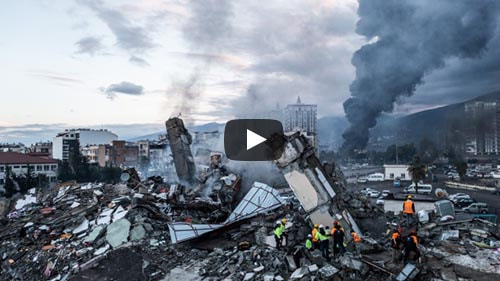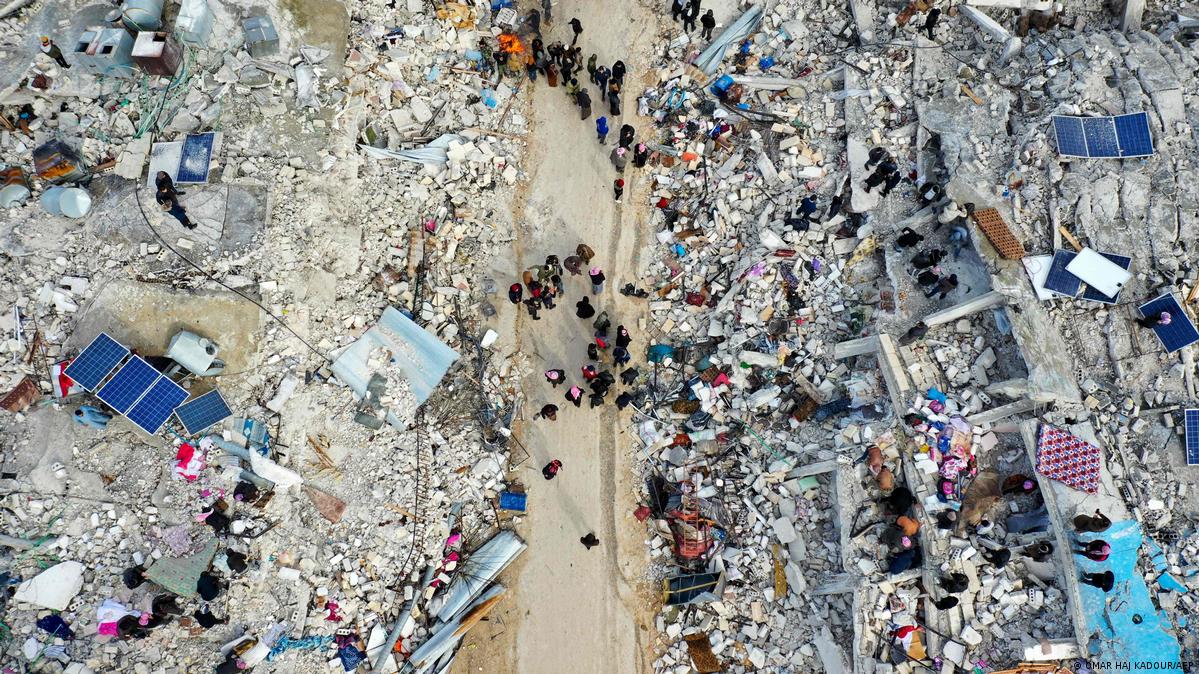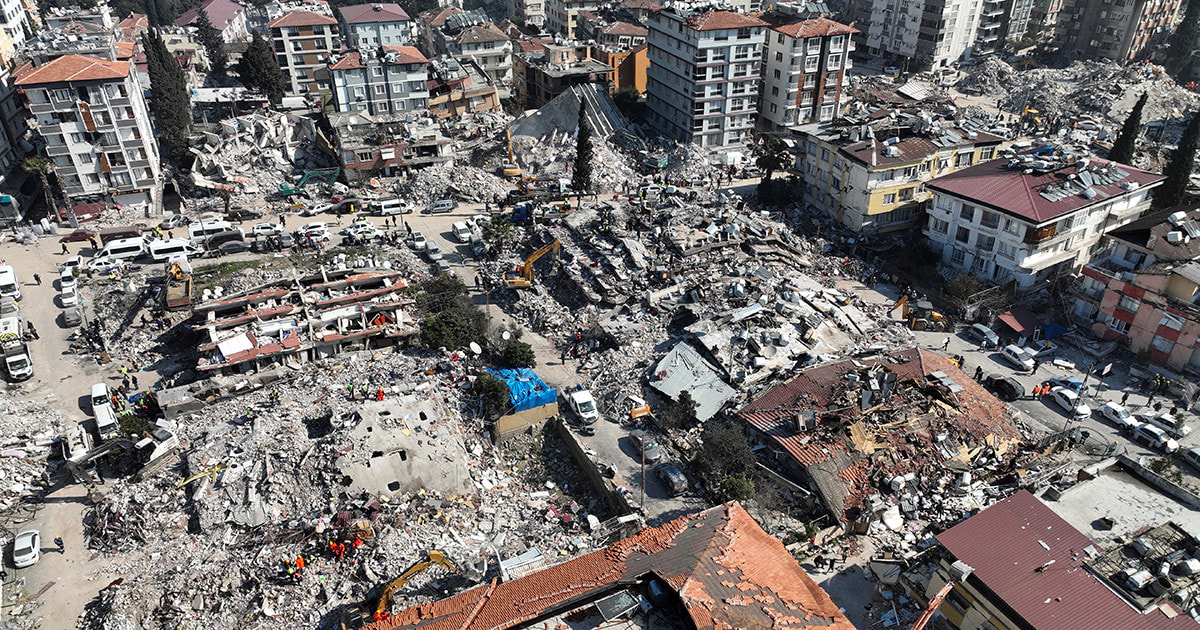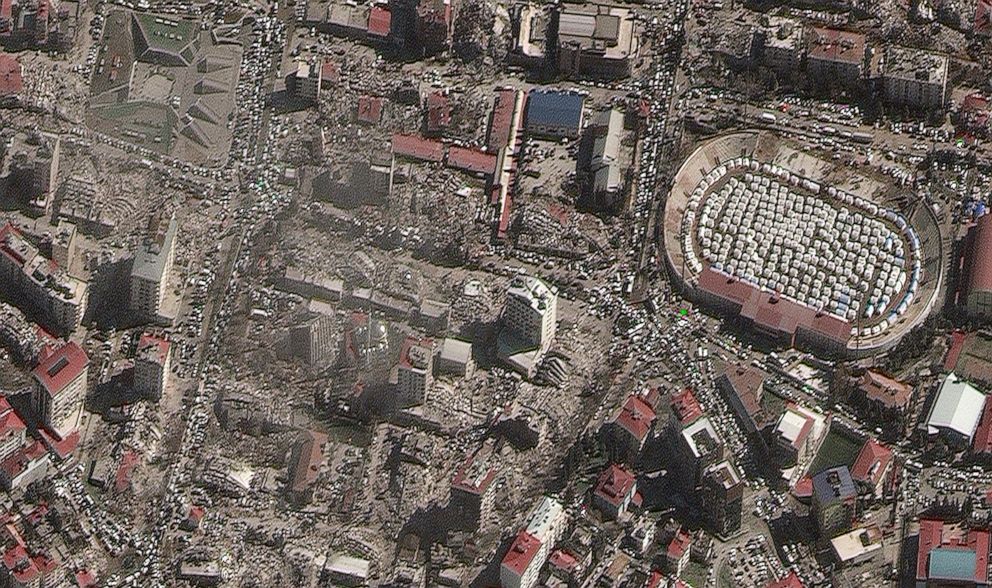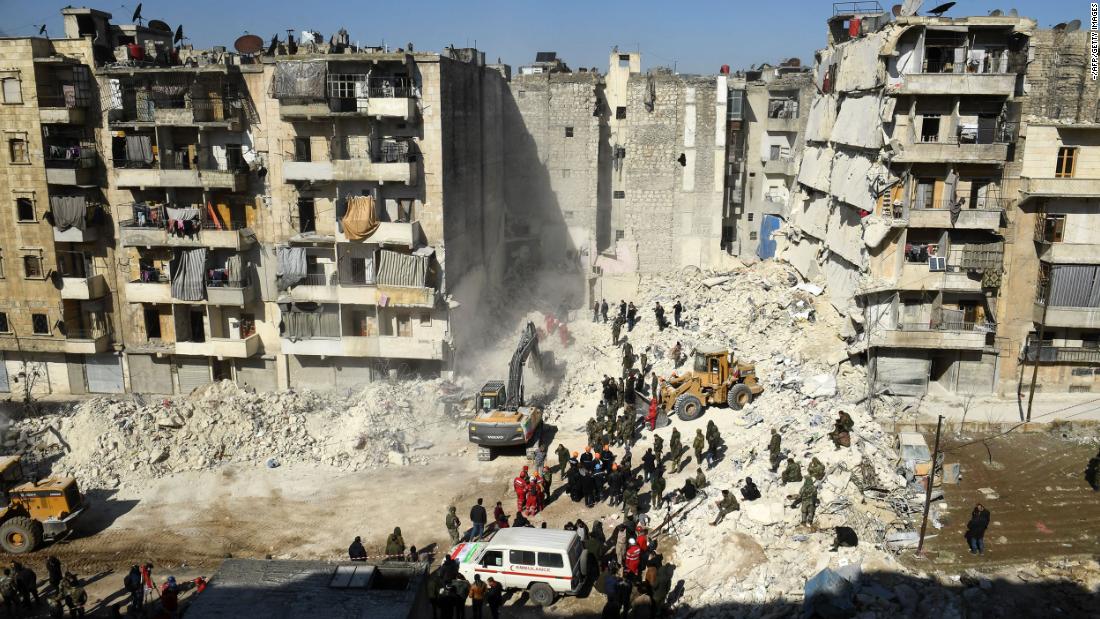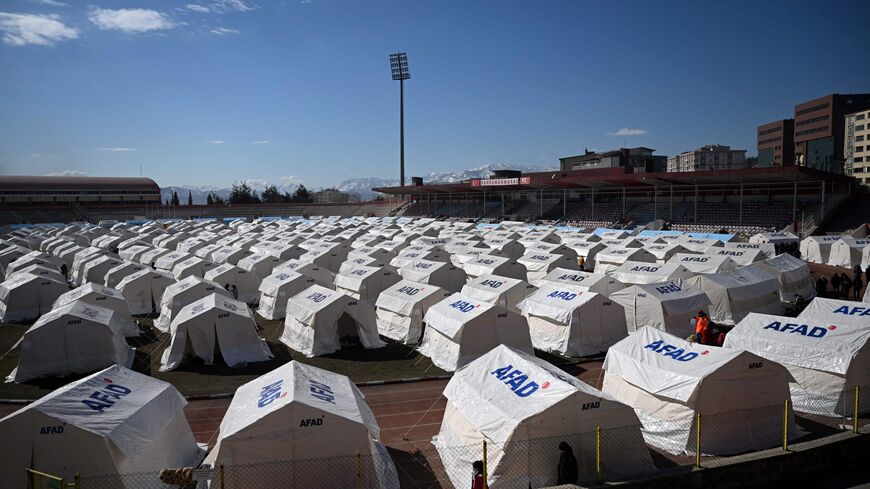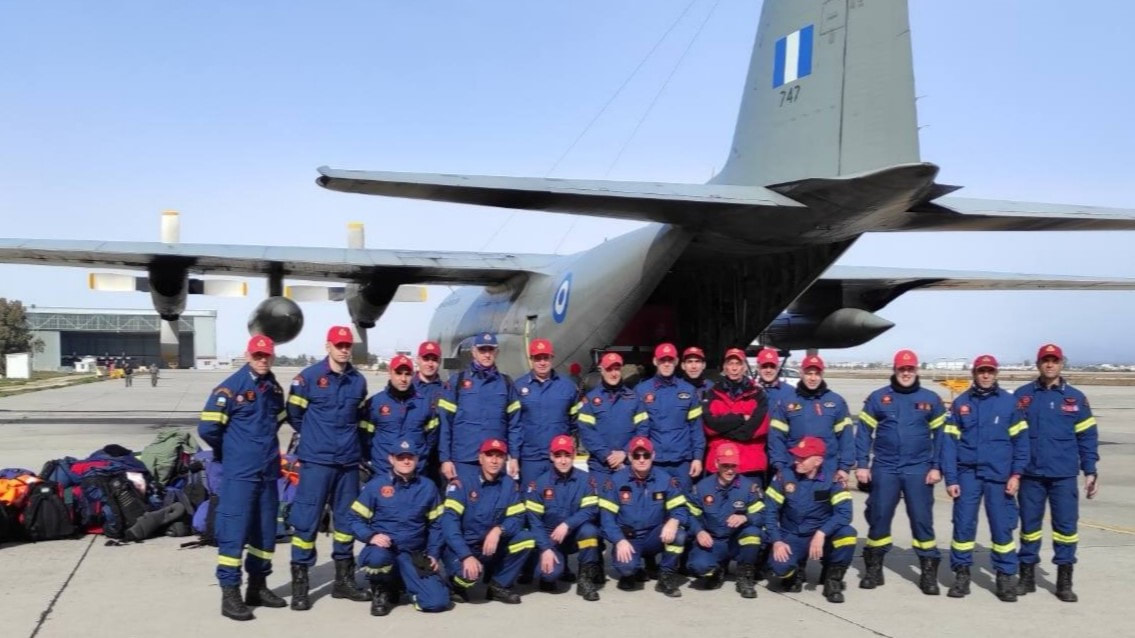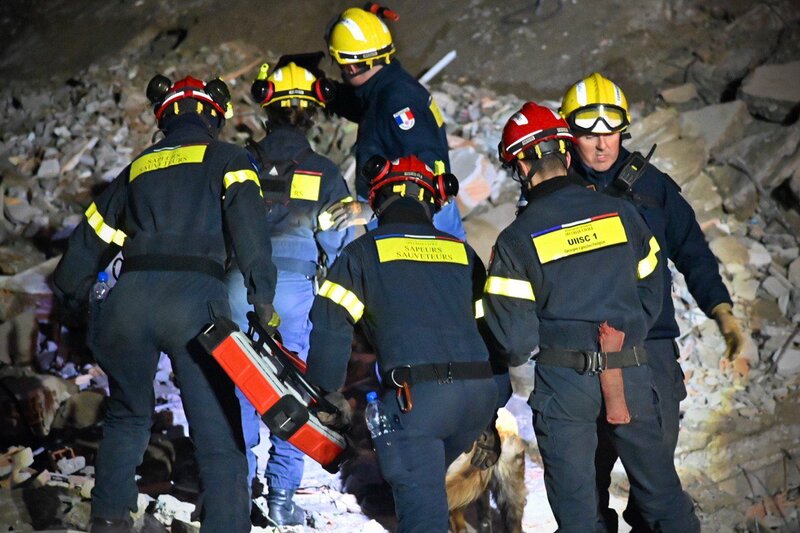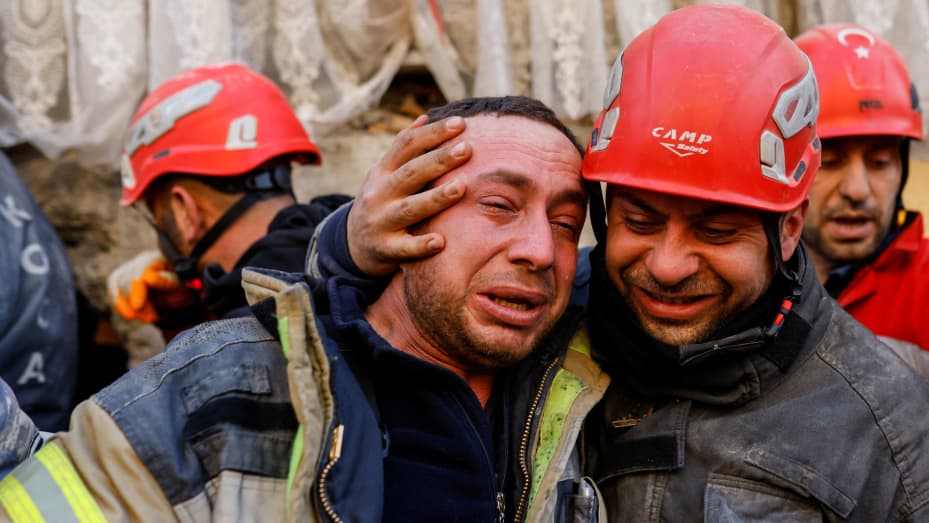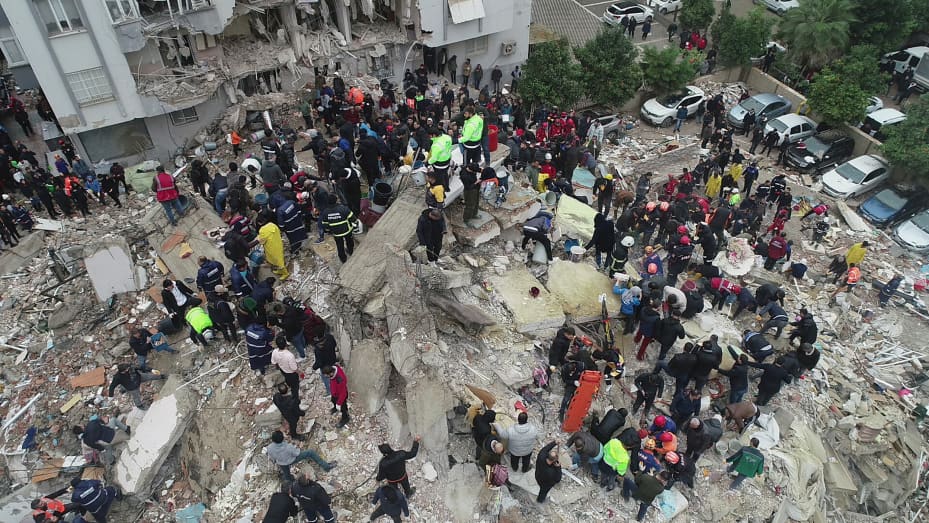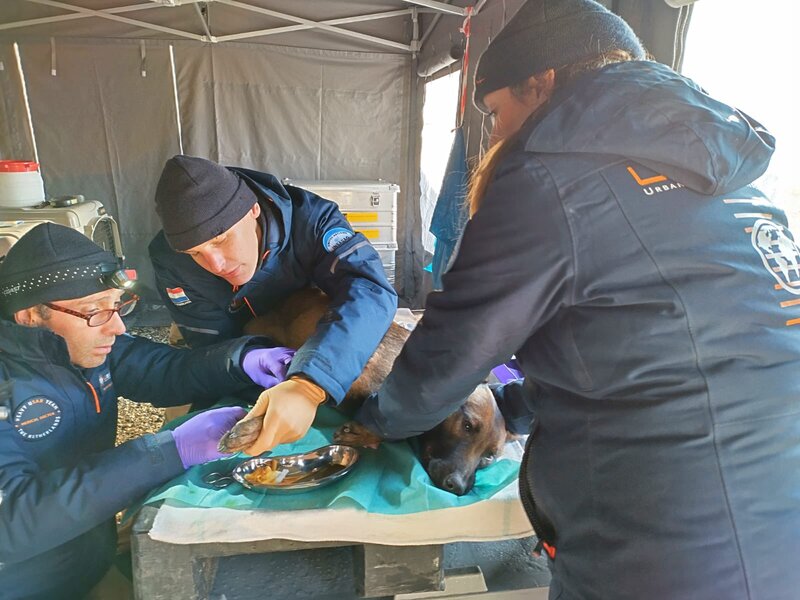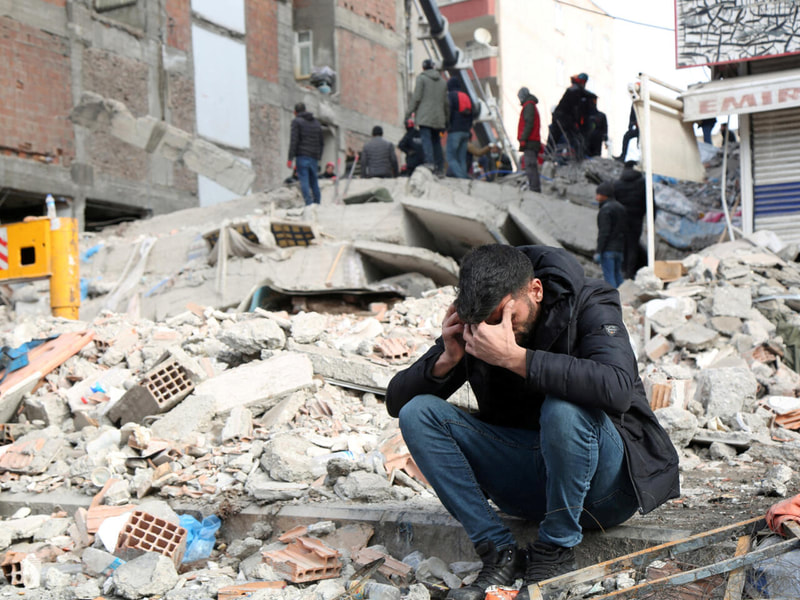- Home
- Magazines
-
Newsletters
- 19 July 2024
- 12 July 2024
- 5 July 2024
- 28 June 2024
- 14 June 2024
- 7 June 2024
- 31 May 2024
- 24 May 2024
- 17 May 2024
- 10 May 2024
- 3 May 2024
- 26 April 2024
- 19 April 2024
- 12 April 2024
- 22 March 2024
- 15 March 2024
- 8 March 2024
- 1 March 2024
- 23 February 2024
- 16 February 2024
- 9 February 2024
- 26 January 2024
- 19 January 2024
- 12 January 2024
- 22 December 2023
- 1 December 2023
- 24 November 2023
- 10 November 2023
- 3 November 2023
- 27 October 2023
- 20 October 2023
- 13 October 2023
- 6 October 2023
- 29 September 2023
- 22 September 2023
- 15 September 2023
- 8 September 2023
- 25 August 2023
- 18 August 2023
- 11 August 2023
- 4 August 2023
- 28 July 2023
- 21 July 2023
- 14 July 2023
- 7 July 2023
- 30 June 2023
- 23 June 2023
- 15 June 2023
- 2 June 2023
- 26 May 2023
- 19 May 2023
- 12 May 2023
- 5 May 2023
- 28 April 2023
- 21 April 2023
- 14 April 2023
- 6 April 2023
- 31 March 2023
- 24 March 2023
- 17 March 2023
- 10 March 2023
- 3 March 2023
- 24 February 2023
- 17 February 2023
- 10 February 2023
- 3 February 2023
- 27 January 2023
- 13 January 2023
- 22 December 2022
- 15 December 2022
- 9 December 2022
- 2 December 2022
- 25 November 2022
- 18 November 2022
- 11 November 2022
- 4 November 2022
- Advertising
- Subscribe
- Articles
-
Galleries
- AOSH Firexpo 2024
- Midvaal Fit to Fight Fire 2024
- WoF KNP 2023 Gallery
- TFA 2023 Gallery
- DMISA Conference 2023
- ETS 2023 Gallery
- Drager Fire Combat and Rescue Challenge 2023
- AOSH Firexpo 2023
- Midvaal Fit to Fight Fire
- WC IFFD 2023
- NMU 13th Fire Management Symposium 2022
- JOIFF Africa Conference 2022
- ETS 2022 Gallery
- TFA 2022 Gallery
- IFFD 2018
- SAESI
- TFA
- WRC 2018
- WRC 2019
- A-OSH/Securex
- IFE AGM 2019
- ETS Ind Fire Comp Nov 2019
- ETS Challenge 2021
- Drager launch
- Drager Fire Combat and Rescue Challenge 2022
- TFA
- Contact
- Home
- Magazines
-
Newsletters
- 19 July 2024
- 12 July 2024
- 5 July 2024
- 28 June 2024
- 14 June 2024
- 7 June 2024
- 31 May 2024
- 24 May 2024
- 17 May 2024
- 10 May 2024
- 3 May 2024
- 26 April 2024
- 19 April 2024
- 12 April 2024
- 22 March 2024
- 15 March 2024
- 8 March 2024
- 1 March 2024
- 23 February 2024
- 16 February 2024
- 9 February 2024
- 26 January 2024
- 19 January 2024
- 12 January 2024
- 22 December 2023
- 1 December 2023
- 24 November 2023
- 10 November 2023
- 3 November 2023
- 27 October 2023
- 20 October 2023
- 13 October 2023
- 6 October 2023
- 29 September 2023
- 22 September 2023
- 15 September 2023
- 8 September 2023
- 25 August 2023
- 18 August 2023
- 11 August 2023
- 4 August 2023
- 28 July 2023
- 21 July 2023
- 14 July 2023
- 7 July 2023
- 30 June 2023
- 23 June 2023
- 15 June 2023
- 2 June 2023
- 26 May 2023
- 19 May 2023
- 12 May 2023
- 5 May 2023
- 28 April 2023
- 21 April 2023
- 14 April 2023
- 6 April 2023
- 31 March 2023
- 24 March 2023
- 17 March 2023
- 10 March 2023
- 3 March 2023
- 24 February 2023
- 17 February 2023
- 10 February 2023
- 3 February 2023
- 27 January 2023
- 13 January 2023
- 22 December 2022
- 15 December 2022
- 9 December 2022
- 2 December 2022
- 25 November 2022
- 18 November 2022
- 11 November 2022
- 4 November 2022
- Advertising
- Subscribe
- Articles
-
Galleries
- AOSH Firexpo 2024
- Midvaal Fit to Fight Fire 2024
- WoF KNP 2023 Gallery
- TFA 2023 Gallery
- DMISA Conference 2023
- ETS 2023 Gallery
- Drager Fire Combat and Rescue Challenge 2023
- AOSH Firexpo 2023
- Midvaal Fit to Fight Fire
- WC IFFD 2023
- NMU 13th Fire Management Symposium 2022
- JOIFF Africa Conference 2022
- ETS 2022 Gallery
- TFA 2022 Gallery
- IFFD 2018
- SAESI
- TFA
- WRC 2018
- WRC 2019
- A-OSH/Securex
- IFE AGM 2019
- ETS Ind Fire Comp Nov 2019
- ETS Challenge 2021
- Drager launch
- Drager Fire Combat and Rescue Challenge 2022
- TFA
- Contact
|
10 February 2023
|
Overview: Major earthquake and many aftershocks hit Turkey, Syria
|
|
|
An earthquake struck southern and central Turkey and northern and western Syria on Monday, 6 February 2023. It occurred 34km west of the city of Gaziantep at 04h17am TRT, with a magnitude of at least Mw7,8 and a maximum Mercalli intensity of XI (Extreme). An unusually strong Mw7,7 aftershock occurred nine hours after the main shock, centred 95km to the north–northeast in Kahramanmaraş Province. The main shock is the strongest and deadliest earthquake in Turkey since the 1939 Erzincan earthquake, of the same magnitude, together with which it is the strongest in Turkey since the 1668 North Anatolia earthquake. The earthquake is also the deadliest in Syria since 1822. It is one of the strongest earthquakes ever recorded in the Levant and the deadliest earthquake worldwide since the 2010 Haiti earthquake. It was felt as far as Israel, Lebanon, Cyprus and the Black Sea coast of Turkey. This is an overview of the incident. Our next FRI Newsletter will feature rescues and recoveries.
The earthquake was followed by more than 2 100 aftershocks. The seismic sequence was the result of shallow strike-slip faulting. As of 13 February 2023, more than 36 900 deaths have been reported; over 31 600 in Turkey and 5 300 in Syria.
The Turkish national government declared a level four alert to appeal for international aid. According to the Disaster and Emergency Management Presidency, 25 000 search and rescue personnel were dispatched to the 10 affected provinces. At least 70 countries offered to help in search and rescue operations.
A large winter storm has hampered rescue efforts, dropping snow on the ruins and bringing plummeting temperatures. Due to the freezing temperatures in the area, survivors, especially those trapped under rubble, are at a great risk of hypothermia. The earthquake is estimated to have caused $84,1 billion US dollars’ worth of damage, making it the fourth-costliest earthquake on record and one of the costliest natural disasters ever recorded.
Damages and casualties in Turkey
There were at least 31 643 deaths and 80 278 injured across 10 provinces in Turkey. At least 13,5 million people and four million buildings have been affected. Thousands were trapped under rubble when buildings collapsed. Around 12 141 buildings collapsed in 10 provinces across Turkey. The earthquake caused broad fissures on roads. During recovery efforts, body parts are often found in the rubble.
Adana Şakirpaşa Airport was closed due to runway damage. At least 300 buildings were razed in Malatya. The ceiling of Malatya Erhaç Airport experienced a partial collapse, as did the historic Yeni Camii mosque.
In Gaziantep, much of the historical sites were significantly damaged, such as Gaziantep Castle, Şirvani Mosque and Liberation Mosque. Gaziantep Oğuzeli Airport was forced to restrict its service to rescue flights. In towns such as Nurdağı, mass graves were created to bury the overwhelming number of dead, an imam said up to 40 percent of the town's population had died.
In Hatay Province, an unknown number of people are trapped beneath the rubble of collapsed buildings. At least 9 224 buildings in the province were partially or totally destroyed. In Antakya at least 2 749 buildings were destroyed. The districts of Kırıkhan and İskenderun were razed. The runway of Hatay Airport was split and uplifted, leading to flight cancellations. Ankara Metropolitan Municipality started repairing the damaged airport, which was completed by 12 February, allowing the airport to resume operations. Two provincial hospitals and a police station were destroyed and a gas pipeline exploded. The building that was the assembly of Hatay State was destroyed. Several dozen buildings in Güzelburç district and nearly every house in the central and Cebrail districts collapsed. Most of the squad and coaching staff of the local football club Hatayspor were initially trapped in the collapse of their headquarters in Antakya before being rescued, but sporting director Taner Savut is still under the rubble.
In İskenderun, an industrial city in Hatay Province, a large fire at the port was reported on 6 February 2023 at 17h00 local time believed to have originated from a container carrying flammable industrial oil, forcing the port's closure and the diversion of many ships. It was reported to be extinguished on 6 and 8 February 2023, only for it to reignite the next day each time. It was finally extinguished on 10 February 2023. Flooding occurred along the city shoreline, inundating streets as much as 200m inland. The Cathedral of the Annunciation, seat of the Roman Catholic Apostolic Vicariate of Anatolia, was almost completely destroyed.
In Kahramanmaraş, there are at least 5 323 deaths including 4 493 buried under rubble and 9 243 people injured. Mass burials occurred in the city; more than 5 000 bodies had been buried. A city official said the mass grave would eventually be the burial ground for the 10 000 people killed. The Interior Ministry later confirmed that 941 buildings there had totally collapsed.
In Adıyaman Province, over 600 buildings collapsed, including Adıyaman's city hall. In Şanlıurfa Province, 19 buildings collapsed.
Diyarbakır Fortress, a UNESCO World Heritage Site, was also partly destroyed, while damage was also reported in structures at the adjacent World Heritage Site of Hevsel Gardens. A total of 255 people were killed and 901 others were injured in Diyarbakır Province.
In Kızıltepe District, Mardin Province, a woman died of a heart attack upon experiencing the quake. In Batman Province, 20 people were injured, one of them seriously, two houses collapsed and 38 others were damaged. In Bingöl Province, several houses cracked and some livestock were killed by collapsing barns.
Five people died and 379 were injured in Elazığ Province. An unoccupied apartment building was damaged and later collapsed after the major Mw7,7 aftershock in Elazığ. Three Turkish soldiers also died during rescue operations.
Damages and casualties in Syria
At least 5 329 people have been killed and over 14 500 were injured in Syria. The Syrian Ministry of Health has recorded over 2 068 earthquake-related deaths and 2 950 injuries in government held areas, most of which were in the provinces of Aleppo and Latakia. In rebel-held areas, at least 3 261 people have died and 2 200 others been injured. It was estimated that up to 5,37 million people across Syria might have been made homeless.
Hundreds were killed in the towns of Jindires and Atarib. In Jableh, at least 283 people died, 173 were injured and 19 buildings collapsed. Four bodies were recovered and 15 bodies were in the process of recovery during debris clearance on 10 February. On 11 February, six bodies were retrieved from the rubble of a collapsed house along al-Maliyeh Street, Jableh. In the village of Atme, 11 people died and many residents were buried. Civilians were stuck under the rubble for hours due to the lack of rescue teams in several villages such as Atarib, Besnia, Jindires, Maland, Salqin and Sarmada. In Latakia, at least 150 people, including 46 students and teachers, died and 350 others were injured. At least 48 people were killed in Hama; 43 deaths occurred when an eight-storey building collapsed, which also caused 75 injuries and trapped 125 people.
The President of the Syrian American Medical Society, Amjad Rass, said emergency rooms were packed with injured. In Idlib Governorate, a hospital received 30 bodies. Footballer Nader Joukhadar, who played for the national team, was killed alongside his son when their home collapsed in Jableh.
According to the International Rescue Committee, the earthquake struck when rebel-held areas were preparing for a blizzard and experiencing a cholera outbreak. In Aleppo, Syria's second largest city, dozens of buildings collapsed and more than 400 people died. By 6 February 2023, the bodies of 210 victims were returned to their families. The Directorate-General of Antiquities and Museums said various archaeological sites across the city were extensively cracked or collapsed. Cracks were also reported in the outer façade of the Aleppo National Museum. In Atarib, Aleppo, the Syrian American Medical Society hospital said 120 bodies were recovered. About 20 000 homes were affected in Aleppo, putting 70 000 people without homes. In Rajo, a prison facility experienced cracked walls and doors. At least 20 prisoners, believed to be Daesh (ISIS) members, escaped the facility.
In Damascus, many people fled from their homes onto the streets. In the northern parts of the city, many buildings sustained cracks. Many buildings in Syria had already been damaged by an almost 12-year-long civil war. The Crusader-built castle Margat suffered damage, with part of a tower and parts of some walls collapsing. The Citadel of Aleppo was also affected. A total of 490 adobe buildings had partially or fully collapsed, while thousands of others were damaged in northwestern Syria. The minaret of the Grand Mosque in Kobanî was also damaged. In Jindires, at least 250 buildings were razed; among the deaths were a family of seven; the only survivor was a newborn. The Minister of Education said at least 248 schools across the region were damaged.
The Associated Press, citing local residents, reported that the Afrin Dam suffered cracks. On 9 February 2023 at 04h00am, the dam burst and flooded the village of Al-Tloul. Heavy rain also caused a river to swell. Water from the dam caused a river to swell and flood the surrounding area. Almost all of its residents were forced to leave the village; about 500 families were displaced. According to Reuters, citing local residents, between 35 and 40 people died and most buildings in Al-Tloul were damaged or destroyed by the earthquake.
Effects in other countries
The European-Mediterranean Seismological Centre said shaking was felt in Armenia, Egypt, Palestine, Georgia, Greece, Iraq, Jordan, Israel and Russia.
Rescue efforts and support
Various countries and organisations have responded to the earthquake. At least 105 countries and 16 international organizations pledged support for victims of the earthquake, including humanitarian aid. At least eleven countries provided teams with search and rescue dogs to locate victims under the debris and monetary support was offered as well.
European Union (EU): The European Union's European Civil Protection Mechanism, in which Turkey participates despite not being a member of the EU, was activated at the request of Turkey. The EU dispatched thirty-one rescue teams and five medical teams from 23 member states to Turkey and Syria, committed €3 million and €3,5 million to Turkey and Syria respectively and announced a donor conference to raise money. The Copernicus Programme was also activated to provide emergency mapping services and other help .
United Nations (UN): Several United Nations agencies announced coordinated responses to the disaster, including UNDAC, OCHA, UNHCR, UNICEF and IOM. The World Health Organisation's Regional Director for Europe, Hans Kluge, said the organisation's regional offices were assisting international efforts to transport medicine and relief equipment. The UN released $25 million from its emergency fund for humanitarian assistance in Turkey and Syria. A second $25 million grant was released for relief efforts in Syria.
North Atlantic Treaty Organisation (NATO): NATO secretary-general Jens Stoltenberg said that member countries were mobilising support. The Strategic Airlift Capability was used to transport search and rescue equipment. NATO deployed "fully equipped semi-permanent shelter facilities" to house displaced persons in Turkey. Flags at NATO headquarters were also lowered to half-mast.
Criticism of Turkish government
The collapse of many newly constructed buildings during the earthquakes caused public anger and doubts in building safety standards. After the destructive İzmit earthquake of 1999, new building codes were passed to make buildings more resilient to earthquakes. The quality of the concrete is often a source of collapse, especially in older buildings but in some cases the engineering and design of newer high rise buildings and improper placement of support columns and beams, may have contributed to collapse. The building codes, last updated in 2018, have requirements for engineering design and construction quality as well as material quality. There have long been complaints that the building codes are weakly enforced. In Turkey, the government had provided periodic "construction amnesties", effectively legal exemptions for the payment of a fee, for structures built without the required safety certificates or those that deviated from original licensed designs, often by adding additional floors. Up to 75 000 buildings across the affected earthquake zone in southern Turkey have been given construction amnesties.
Criminal investigation
On 9 February 2023, the Minister of Justice, Bekir Bozdağ, said a judicial investigation into the collapse of buildings was opened. The probe attempts to hold accountable those who constructed the buildings or bore any responsibility for their collapse in the 10 hardest-hit provinces. Justice Minister Bekir Bozdağ said, "Those who have negligence, faults and those responsible for the destructions after the earthquake will be identified and held accountable before the judiciary". Nearly 150 local prosecutors were authorised to establish units to investigate contractors, surveyors and other experts linked to the collapsed buildings.
On 11 February 2023, Turkey's justice ministry announced the plan to establish the "Earthquake Crimes Investigation" bureaus. The bureaus aim to hold contractors and other responsible for construction, gathering evidence, recommendation experts; including architects, geologists and engineers and inspecting building permits and occupation permits. On 11 February 2023, Vice President Fuat Oktay said 131 individuals linked to the collapse of buildings were identified.
The majority of buildings that collapsed in Turkey were constructed before 2000 but some were constructed after that year. Following the 1999 earthquake, building construction followed new regulations and had improved materials. Sukru Ersoy, a geology professor at Yıldız Technical University, said, "corruption is high in the construction sector in Turkey. And therefore, there were abuses"
Sources: Reuters, Euro News, Al Jazeera, Associated Press and numerous others
The earthquake was followed by more than 2 100 aftershocks. The seismic sequence was the result of shallow strike-slip faulting. As of 13 February 2023, more than 36 900 deaths have been reported; over 31 600 in Turkey and 5 300 in Syria.
The Turkish national government declared a level four alert to appeal for international aid. According to the Disaster and Emergency Management Presidency, 25 000 search and rescue personnel were dispatched to the 10 affected provinces. At least 70 countries offered to help in search and rescue operations.
A large winter storm has hampered rescue efforts, dropping snow on the ruins and bringing plummeting temperatures. Due to the freezing temperatures in the area, survivors, especially those trapped under rubble, are at a great risk of hypothermia. The earthquake is estimated to have caused $84,1 billion US dollars’ worth of damage, making it the fourth-costliest earthquake on record and one of the costliest natural disasters ever recorded.
Damages and casualties in Turkey
There were at least 31 643 deaths and 80 278 injured across 10 provinces in Turkey. At least 13,5 million people and four million buildings have been affected. Thousands were trapped under rubble when buildings collapsed. Around 12 141 buildings collapsed in 10 provinces across Turkey. The earthquake caused broad fissures on roads. During recovery efforts, body parts are often found in the rubble.
Adana Şakirpaşa Airport was closed due to runway damage. At least 300 buildings were razed in Malatya. The ceiling of Malatya Erhaç Airport experienced a partial collapse, as did the historic Yeni Camii mosque.
In Gaziantep, much of the historical sites were significantly damaged, such as Gaziantep Castle, Şirvani Mosque and Liberation Mosque. Gaziantep Oğuzeli Airport was forced to restrict its service to rescue flights. In towns such as Nurdağı, mass graves were created to bury the overwhelming number of dead, an imam said up to 40 percent of the town's population had died.
In Hatay Province, an unknown number of people are trapped beneath the rubble of collapsed buildings. At least 9 224 buildings in the province were partially or totally destroyed. In Antakya at least 2 749 buildings were destroyed. The districts of Kırıkhan and İskenderun were razed. The runway of Hatay Airport was split and uplifted, leading to flight cancellations. Ankara Metropolitan Municipality started repairing the damaged airport, which was completed by 12 February, allowing the airport to resume operations. Two provincial hospitals and a police station were destroyed and a gas pipeline exploded. The building that was the assembly of Hatay State was destroyed. Several dozen buildings in Güzelburç district and nearly every house in the central and Cebrail districts collapsed. Most of the squad and coaching staff of the local football club Hatayspor were initially trapped in the collapse of their headquarters in Antakya before being rescued, but sporting director Taner Savut is still under the rubble.
In İskenderun, an industrial city in Hatay Province, a large fire at the port was reported on 6 February 2023 at 17h00 local time believed to have originated from a container carrying flammable industrial oil, forcing the port's closure and the diversion of many ships. It was reported to be extinguished on 6 and 8 February 2023, only for it to reignite the next day each time. It was finally extinguished on 10 February 2023. Flooding occurred along the city shoreline, inundating streets as much as 200m inland. The Cathedral of the Annunciation, seat of the Roman Catholic Apostolic Vicariate of Anatolia, was almost completely destroyed.
In Kahramanmaraş, there are at least 5 323 deaths including 4 493 buried under rubble and 9 243 people injured. Mass burials occurred in the city; more than 5 000 bodies had been buried. A city official said the mass grave would eventually be the burial ground for the 10 000 people killed. The Interior Ministry later confirmed that 941 buildings there had totally collapsed.
In Adıyaman Province, over 600 buildings collapsed, including Adıyaman's city hall. In Şanlıurfa Province, 19 buildings collapsed.
Diyarbakır Fortress, a UNESCO World Heritage Site, was also partly destroyed, while damage was also reported in structures at the adjacent World Heritage Site of Hevsel Gardens. A total of 255 people were killed and 901 others were injured in Diyarbakır Province.
In Kızıltepe District, Mardin Province, a woman died of a heart attack upon experiencing the quake. In Batman Province, 20 people were injured, one of them seriously, two houses collapsed and 38 others were damaged. In Bingöl Province, several houses cracked and some livestock were killed by collapsing barns.
Five people died and 379 were injured in Elazığ Province. An unoccupied apartment building was damaged and later collapsed after the major Mw7,7 aftershock in Elazığ. Three Turkish soldiers also died during rescue operations.
Damages and casualties in Syria
At least 5 329 people have been killed and over 14 500 were injured in Syria. The Syrian Ministry of Health has recorded over 2 068 earthquake-related deaths and 2 950 injuries in government held areas, most of which were in the provinces of Aleppo and Latakia. In rebel-held areas, at least 3 261 people have died and 2 200 others been injured. It was estimated that up to 5,37 million people across Syria might have been made homeless.
Hundreds were killed in the towns of Jindires and Atarib. In Jableh, at least 283 people died, 173 were injured and 19 buildings collapsed. Four bodies were recovered and 15 bodies were in the process of recovery during debris clearance on 10 February. On 11 February, six bodies were retrieved from the rubble of a collapsed house along al-Maliyeh Street, Jableh. In the village of Atme, 11 people died and many residents were buried. Civilians were stuck under the rubble for hours due to the lack of rescue teams in several villages such as Atarib, Besnia, Jindires, Maland, Salqin and Sarmada. In Latakia, at least 150 people, including 46 students and teachers, died and 350 others were injured. At least 48 people were killed in Hama; 43 deaths occurred when an eight-storey building collapsed, which also caused 75 injuries and trapped 125 people.
The President of the Syrian American Medical Society, Amjad Rass, said emergency rooms were packed with injured. In Idlib Governorate, a hospital received 30 bodies. Footballer Nader Joukhadar, who played for the national team, was killed alongside his son when their home collapsed in Jableh.
According to the International Rescue Committee, the earthquake struck when rebel-held areas were preparing for a blizzard and experiencing a cholera outbreak. In Aleppo, Syria's second largest city, dozens of buildings collapsed and more than 400 people died. By 6 February 2023, the bodies of 210 victims were returned to their families. The Directorate-General of Antiquities and Museums said various archaeological sites across the city were extensively cracked or collapsed. Cracks were also reported in the outer façade of the Aleppo National Museum. In Atarib, Aleppo, the Syrian American Medical Society hospital said 120 bodies were recovered. About 20 000 homes were affected in Aleppo, putting 70 000 people without homes. In Rajo, a prison facility experienced cracked walls and doors. At least 20 prisoners, believed to be Daesh (ISIS) members, escaped the facility.
In Damascus, many people fled from their homes onto the streets. In the northern parts of the city, many buildings sustained cracks. Many buildings in Syria had already been damaged by an almost 12-year-long civil war. The Crusader-built castle Margat suffered damage, with part of a tower and parts of some walls collapsing. The Citadel of Aleppo was also affected. A total of 490 adobe buildings had partially or fully collapsed, while thousands of others were damaged in northwestern Syria. The minaret of the Grand Mosque in Kobanî was also damaged. In Jindires, at least 250 buildings were razed; among the deaths were a family of seven; the only survivor was a newborn. The Minister of Education said at least 248 schools across the region were damaged.
The Associated Press, citing local residents, reported that the Afrin Dam suffered cracks. On 9 February 2023 at 04h00am, the dam burst and flooded the village of Al-Tloul. Heavy rain also caused a river to swell. Water from the dam caused a river to swell and flood the surrounding area. Almost all of its residents were forced to leave the village; about 500 families were displaced. According to Reuters, citing local residents, between 35 and 40 people died and most buildings in Al-Tloul were damaged or destroyed by the earthquake.
Effects in other countries
The European-Mediterranean Seismological Centre said shaking was felt in Armenia, Egypt, Palestine, Georgia, Greece, Iraq, Jordan, Israel and Russia.
Rescue efforts and support
Various countries and organisations have responded to the earthquake. At least 105 countries and 16 international organizations pledged support for victims of the earthquake, including humanitarian aid. At least eleven countries provided teams with search and rescue dogs to locate victims under the debris and monetary support was offered as well.
European Union (EU): The European Union's European Civil Protection Mechanism, in which Turkey participates despite not being a member of the EU, was activated at the request of Turkey. The EU dispatched thirty-one rescue teams and five medical teams from 23 member states to Turkey and Syria, committed €3 million and €3,5 million to Turkey and Syria respectively and announced a donor conference to raise money. The Copernicus Programme was also activated to provide emergency mapping services and other help .
United Nations (UN): Several United Nations agencies announced coordinated responses to the disaster, including UNDAC, OCHA, UNHCR, UNICEF and IOM. The World Health Organisation's Regional Director for Europe, Hans Kluge, said the organisation's regional offices were assisting international efforts to transport medicine and relief equipment. The UN released $25 million from its emergency fund for humanitarian assistance in Turkey and Syria. A second $25 million grant was released for relief efforts in Syria.
North Atlantic Treaty Organisation (NATO): NATO secretary-general Jens Stoltenberg said that member countries were mobilising support. The Strategic Airlift Capability was used to transport search and rescue equipment. NATO deployed "fully equipped semi-permanent shelter facilities" to house displaced persons in Turkey. Flags at NATO headquarters were also lowered to half-mast.
Criticism of Turkish government
The collapse of many newly constructed buildings during the earthquakes caused public anger and doubts in building safety standards. After the destructive İzmit earthquake of 1999, new building codes were passed to make buildings more resilient to earthquakes. The quality of the concrete is often a source of collapse, especially in older buildings but in some cases the engineering and design of newer high rise buildings and improper placement of support columns and beams, may have contributed to collapse. The building codes, last updated in 2018, have requirements for engineering design and construction quality as well as material quality. There have long been complaints that the building codes are weakly enforced. In Turkey, the government had provided periodic "construction amnesties", effectively legal exemptions for the payment of a fee, for structures built without the required safety certificates or those that deviated from original licensed designs, often by adding additional floors. Up to 75 000 buildings across the affected earthquake zone in southern Turkey have been given construction amnesties.
Criminal investigation
On 9 February 2023, the Minister of Justice, Bekir Bozdağ, said a judicial investigation into the collapse of buildings was opened. The probe attempts to hold accountable those who constructed the buildings or bore any responsibility for their collapse in the 10 hardest-hit provinces. Justice Minister Bekir Bozdağ said, "Those who have negligence, faults and those responsible for the destructions after the earthquake will be identified and held accountable before the judiciary". Nearly 150 local prosecutors were authorised to establish units to investigate contractors, surveyors and other experts linked to the collapsed buildings.
On 11 February 2023, Turkey's justice ministry announced the plan to establish the "Earthquake Crimes Investigation" bureaus. The bureaus aim to hold contractors and other responsible for construction, gathering evidence, recommendation experts; including architects, geologists and engineers and inspecting building permits and occupation permits. On 11 February 2023, Vice President Fuat Oktay said 131 individuals linked to the collapse of buildings were identified.
The majority of buildings that collapsed in Turkey were constructed before 2000 but some were constructed after that year. Following the 1999 earthquake, building construction followed new regulations and had improved materials. Sukru Ersoy, a geology professor at Yıldız Technical University, said, "corruption is high in the construction sector in Turkey. And therefore, there were abuses"
Sources: Reuters, Euro News, Al Jazeera, Associated Press and numerous others
Quick navigation
Social
|
Who are we?FRI Media (Pty) Ltd is an independent publisher of technical magazines including the well-read and respected Fire and Rescue International, its weekly FRI Newsletter and the Disaster Management Journal. We also offer a complete marketing and publishing package, which include design, printing and corporate wear and gifts. |
Weekly FRI Newsletter |
© Copyright 2018 Fire and Rescue International. All Rights Reserved.





